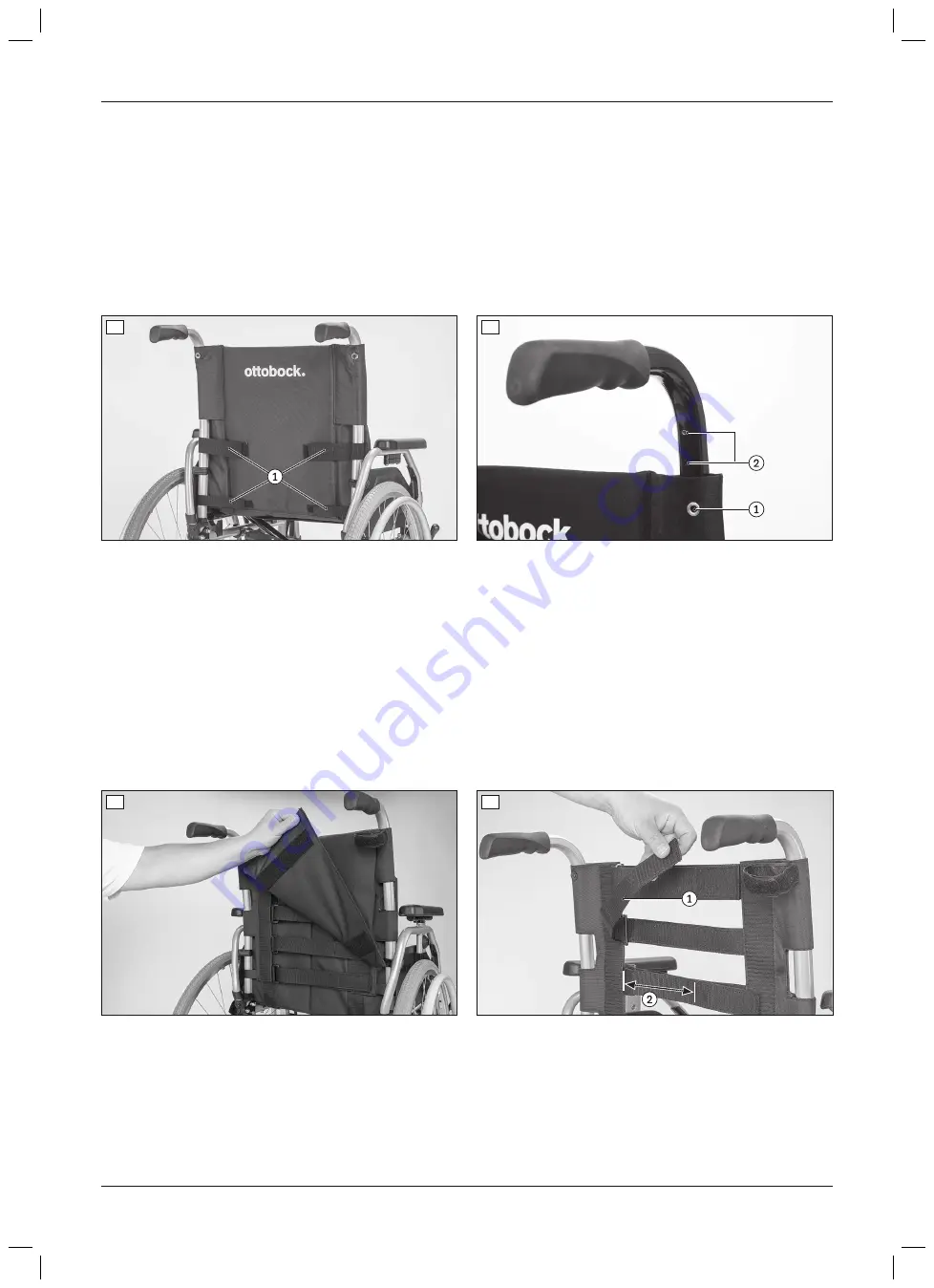
6.6.2 Adjusting the back support upholstery
Back support upholstery, standard
The back support upholstery tension can be easily adjusted:
1) Open the four hook-and-loop closures at the rear (see fig. 27, item 1).
2) Refasten the hook-and-loop straps in the new length position.
The back support upholstery can be adjusted in height by one increment (
25 mm
):
1) Remove the Phillips head screw on each side (see fig. 28, item 1).
2) Move the back support upholstery to the desired height (see fig. 28, item 2).
3) Insert the Phillips head screw on each side and tighten to max.
2 Nm
(not illustrated).
27
28
Economy Ergo back support upholstery
The back support upholstery tension can be individually adjusted with the help of five upholstery straps:
1) Fold up the back support pad (see fig. 29).
2) Open and loosen the hook-and-loop straps one after the other (see fig. 30, item 1).
3) Sit and position the user in the wheelchair.
4) From the bottom to the top, adjust the tension of the hook-and-loop straps to the weight and anatomical condi
tion of the user and fasten the straps one after the other.
→
The end of the hook-and-loop strap has to overlap by at least
100 mm
(see fig. 30, item 2).
→
The respective lower hook-and-loop straps should be adjusted somewhat tighter. Deviating adjustments
may be required in specific cases; this is the responsibility of the attending therapist.
5) Fold down the back support pad and secure it to the upholstery straps with the hook-and-loop fasteners.
29
100 mm
30
6.7 Adjusting the seat
6.7.1 Adjusting the seat upholstery
The seat upholstery usually does not need to be adjusted during the initial fitting. However, the tension can be
changed.
18
Settings
Start M2S, Start M2
















































